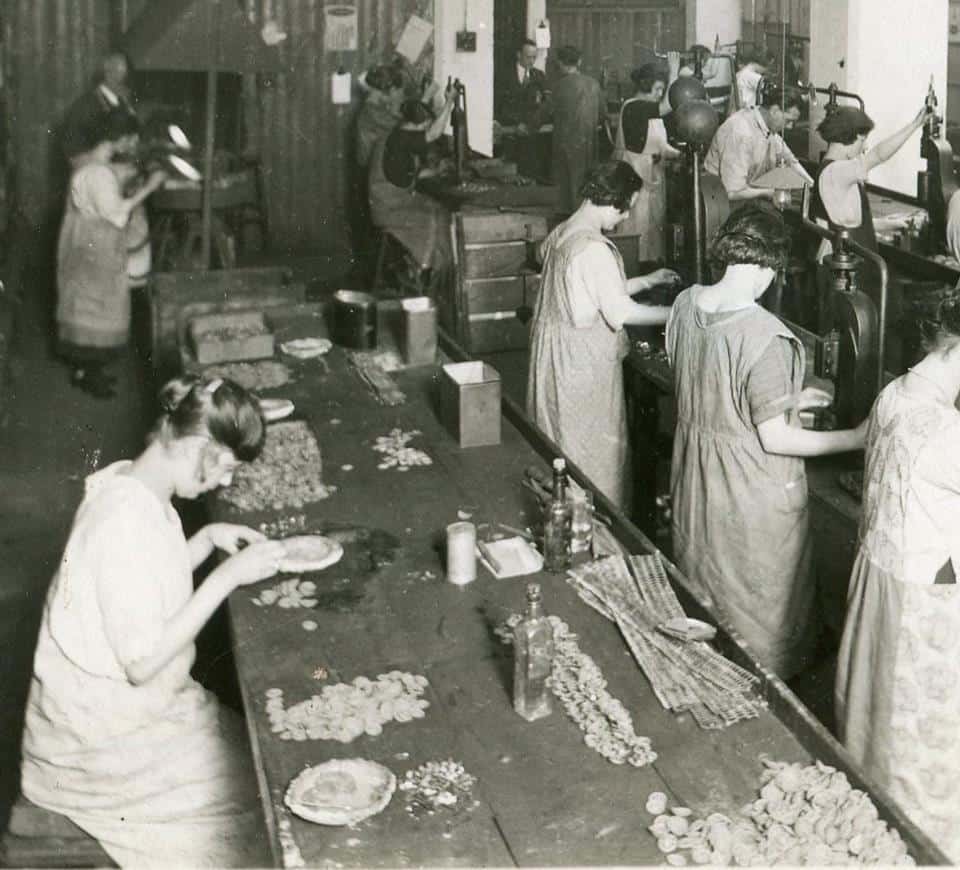Guest Blog: Women’s Work in the Jewellery Quarter – International Women’s Day
Reading Time: 2 minutes
In this month’s Guest Blog we celebrate International Women’s Day on 8th March by highlighting some of the hidden stories of female workers in the historic Jewellery Quarter. To find out more about this topic book onto the Women’s Work in the Jewellery Quarter Tour by The Museum of the Jewellery Quarter.
Women’s Work in the Jewellery Quarter
The Smith and Pepper jewellery manufacturers was established in 1899 and throughout its history employed many women, this can be said of the jewellery trade in particular and the metalworking trade as a whole. During the 18th, 19th and 20th centuries women worked not only in offices but also on the factory floor as press operators, polishers, enamellers and even electroplaters, to name but a few.
Young ladies, like Josie Golby, worked as office girls and started their training straight from school at 14. Josie worked for Smith and Pepper from 1942 until the factories closed in 1981. Her first jobs were making the tea and dusting the office, but she quickly moved on from this to general office work, filling and writing out jewellery orders.
The girls working in factories and small workshops did most of the unskilled work here in the Quarter. These jobs entailed both cutting out the jewellery or metal shapes, such as pen nibs, buttons, covers for powder compacts and polishing making the metal shiny and smooth.

Kathleen Dayus was an icon of the Jewellery Quarter, she was born in Hockley in 1903 and worked all of her life here. Her working life began in 1917 aged just 14. Her first job was on the fly press, cutting out buttons for soldiers trousers. Although she enjoyed this work she wanted to learn all she could about the metalworking trade, so she moved around the quarter taking on lots of different occupations. She eventually settled in the enamel trade and even opened her own enamelling workshop. Later she wrote a book telling her rags to riches story called “The Girl From Hockley”. The importance of this book in highlighting the lives of women working here during the Edwardian period cannot be underestimated. In recognition for her work, a local square in the Quarter was named after her in her honour.

